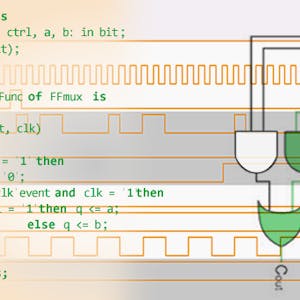Sistemas Digitales: De las puertas lógicas al procesador is a comprehensive course that delves into the fundamentals of modern digital circuit design with a practical orientation. This course is ideal for students in the early stages of ICT-related engineering programs and individuals seeking to explore the realm of digital systems. The curriculum focuses on complex digital system design, understanding digital system descriptions using high-level languages like VHDL, and comprehending the basic operation of computers at a machine language level.
Throughout the course, participants will learn about binary numbering systems, algorithm representation in pseudocode, digital systems, electronic digital systems, combinational circuits, arithmetic circuits, introduction to VHDL, sequential circuits, finite state machines, and digital system implementation. The course also provides an overview of tools for synthesizing combinational circuits and strategies for physical implementation.
Certificate Available ✔
Get Started / More Info
Sistemas Digitales: De las puertas lógicas al procesador covers a range of topics including binary numbering systems, combinational and sequential circuits, VHDL, and digital system implementation. Participants will gain essential knowledge in modern digital circuit design with a practical approach.
Sistemas Digitales: De las puertas lógicas al procesador commences with an introduction to the course, covering binary numbering systems, algorithm representation in pseudocode, the course structure, evaluation process, and FAQs. Participants will also learn about the installation of the virtual machine and access course resources.
Module 2, "¿Qué son los Sistemas Digitales?," delves into the fundamentals of digital systems, electronic digital systems, and examples of processor programs. It features lessons on specifications of the processor, examples of programs, and various tests to evaluate understanding.
Module 3, "Circuitos Combinacionales (I)," covers circuit combinational principles, Boolean algebra, logic gates, functional and structural specifications, and tools for circuit synthesis. Participants engage in exercises and tests to reinforce their understanding.
Module 4, "Circuitos Combinacionales (II)," continues the exploration of combinational circuits, addressing tools for circuit synthesis, response times, and implementation of programming structures. It includes exercises and tests for practical application.
Module 5, "Circuitos aritméticos + Introducción al VHDL," introduces arithmetic circuits and provides an in-depth exploration of VHDL, covering lexical, syntactic, and structural aspects, as well as sequential and concurrent statements. Exercises and tests are included to gauge understanding.
Module 6, "Circuitos Secuenciales (I)," focuses on sequential circuits, explicit functional description, components like flip-flops, synthesis from tables, and examples. Participants also engage in exercises and tests to solidify their knowledge.
Module 7, "Circuitos Secuenciales (II)," elaborates on sequential circuits, covering shift registers, counters, memories, and memory banks. It also includes exercises and tests for practical application of knowledge.
Module 8, "Máquinas de estados finitos," explores sequential algorithm implementation, finite state machines, and their examples, providing a comprehensive understanding of sequential systems. Exercises and tests are included for practical application.
Module 9, "Implementación de sistemas digitales," concludes the course with a focus on physical implementation strategies and synthesis tools, ensuring participants grasp the practical aspects of digital system implementation.
Digital Signal Processing is a comprehensive specialization covering discrete-time signals, Fourier transform analysis, digital filters, and real-time DSP implementation...
Real-Time Embedded Systems specialization offers comprehensive training in real-time theory, analysis, and practical implementation for embedded systems, preparing...
This course delves deep into Maxwell's Equations, exploring wave equations, AC circuits, and their practical applications in various fields.
Introduction to FPGA Design for Embedded Systems provides a comprehensive understanding of FPGA technology, architecture, and design. Ideal for aspiring engineers...